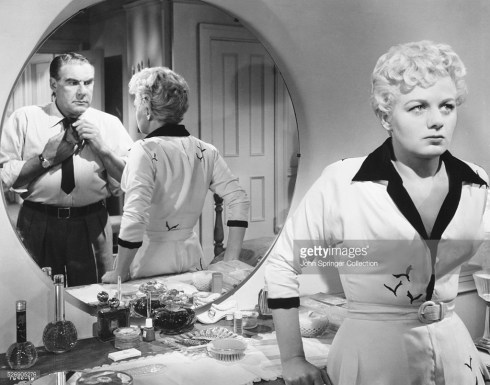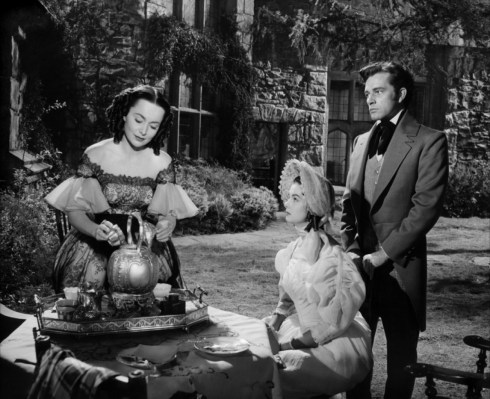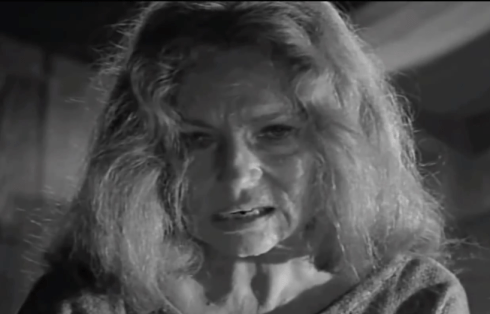WATCHER IN THE WOODS 1980

It was just an innocent game… until a young girl vanished for thirty years

Once upon a time in the 70s, Disney took guardianship of some pretty dark films. The Watcher in the Woods is one such film. Directed by John Hough (Dirty Mary, Crazy Larry 1974, Escape to Witch Mountain 1975, Return from Witch Mountain 1978, The Incubus 1982).
The film works as a teenage adventure/fantasy meets Modern Gothic story based on the novel by Florence Engell Randall with contributions to the screenplay by Brian Clemens.

An American couple Helen and Paul Curtis, played by two distinctly charismatic actors David McCallum and Carroll Baker, and their two daughters Lynn Holly Johnson and Kyle Richards as Jan and Ellie Curtis, travel to an isolated house in rural England. Bette Davis commands the screen with less blaze and more secretive self-control as Mrs. Aylwood, a strange widow who befriends the girls and whose daughter went missing 30 years ago. The two young women investigate the mysterious happenings at the manor house and stumble onto the truth behind Karen Aylwood’s disappearance. I will not spoil the reveal of this film, in fact, the DVD has alternative endings due to extensive cuts as well as additions of scenes added under the un-credited supervision of Vincent McEveety. — I can say that prefer John Kenneth Muir’s interpretation of one considered outcome as Karen leaving and returning as a “kind of Orphean Underworld story.” For those of you who might not like just one explanation, I’ll leave it as an enticement to watch Watcher through to the end/ends!
While some critics found Watcher in the Woods abysmal there are enough fans who remain devoted to the film as a cult classic. Setting some whiny moments, and a few meandering plot potholes, Watcher in the Woods maintains a certain atmospheric bubble that surrounds the story, and adds nice touches of Gothic motifs, like the abandoned church, as John Kenneth Muir says in Horror Films of the 1980s the crumbling church “representing decay.”Â
I see it also as how the old waits quietly for youth to return.

SOMETHING WICKED THIS WAY COMES 1983

After he fulfills your deepest, lifelong dream…he’ll tell you the price you have to pay… Never whisper your dreams, for someone might be listening…

Both the novel and screenplay for Something Wicked This Way Comes were penned by the prolific fantasist/dreamer Ray Bradbury.

Directed by one of the most interesting directors Jack Clayton, a man who summons uncomfortable images and mind frames around dysfunction in the so-called conventional family structure, and even more diffuse in his work he personifies the children, those innocent little souls with a will that can not only be menacing but truly threatening and evil. Clayton has painted landscapes of chilling psychological horror and Something Wicked This Way Comes embraces his haunting perceptions in perfect sync with Bradbury’s malevolent story equal parts fantasy equal parts horror. Bradbury retained the nightmarish poeticism that his novel possessed in the screenplay and then adapted it to the screen.

Bradbury’s fantastic tale began as a short story entitles “Black Ferris” which was originally published in Weird Tales Magazine in 1948. Then he adapted it to his screenplay for use by Gene Kelly who unfortunately was not able to get the funding for the project. The success found Bradbury’s story when he released it as a novel in 1962 which found its way yet back once again into a screenplay in the 1970s when an interesting collection of directors were approached– from Sam Peckinpah, Mark Rydell, and even Steven Spielberg. By the time 1982 came around it was Jack Clayton (The Queen of Spades 1949, The Story of Esther Costello 1957, Room at the Top 1959, The Innocents 1961, The Pumpkin Eater 1964, Our Mother’s House 1967), who was tapped to direct the film, perhaps Spielberg might have added a great commercial veneer to the picture, but the dark dreams that Jack Clayton is capable of envisioning, I think, is the right kind of poison (And I mean that in a good way). The atmosphere of the sleepy little Green Town, Illinois, circa 1920 needed to wash off that mainstream Rockwell Painting style veneer and lay bare the secretive and dreadful things that suppurate in a small old-fashioned and quite often repressed Americana town.

For into this quaint and picturesque Midwestern town comes a dark & arcane carnival led by the mysterious Mr. Dark played exquisitely by Jonathan Pryce. And unlike the lyrical circus of The 7 Faces of Dr. Lao starring the wonderful Tony Randall, this carnival is pure evil.


As enigmatic as Pryce is in this role, equally mesmerizing is Pam Grier who inhabits the sensuous yet deadly Dust Witch! The otherworldly train that is veiled in fog and spirit lights brings “the Autumn People” who march through the town slowly like a funeral dirge preparing their secret ceremonies that will summon the darkness to coax and bedevil the unsuspecting yet desperate people of Green Town who are hungry for magic to change their lives.

The carnival seems to tap into the desires of many of the townspeople providing them with wish-fulfillment, to make their every dream come true. Many of the town folk like Mr. Crosetti played by Richard Davalos out of their loneliness seek companionship or Ed the Bartender played by James Stacy who lost a leg and an arm in the war would love to be that football hero again.
What ultimately happens after these unsuspecting but naive town folk should have realized that they have sold their souls and are damned for an eternity to suffer the irony of their wishes. And in the end, it is a lesson in what we desire weighed against what we regret.
As one of the vehicles for Mr. Dark’s malevolent magical conduits, he employs a menacing merry-go-round which can make the rider can grow either younger or older depending on which direction it turns.
Will Halloway and Jim Nightshade are boyhood buddies–Will sees his father struggle with feeling like an old man, while Jim waits hopelessly in vain for his father to return.



Jim buys a lighting rod from Tom Fury (Royal Dano) who warns of the storm that is coming. That night the boys sneak out into the woods and watch as the train pulls in with no one aboard. They do however learn that it is bringing Mr. Dark’s Pandemonium Carnival to their boring little town.
At the centerpiece of the story comes Jason Robards an aging father and local librarian Charles Halloway who feels he’s failed his son Vidal Peterson as Will Halloway. In the end, it is up to the two to fight off Mr. Dark who would like nothing better than take most of the town along board the malefic train to the next destination, collecting souls along the way.


With music by James Horner, and co-starring Royal Dano who sells much-needed lightning rods, Diane Ladd plays Jim Nightshades’ mother, Mary Grace Canfield plays Miss Foley who has lost her youth and beauty and is narrated by Arthur Hill as an older Will. The special effects of the 80s create a moody, fantastical little carnival nightmare that moves like a beautiful & maudlin ballet.





































































































































































































































































































































































































![Anna Lucasta (1958) | Pers: Eartha Kitt, Sammy Davis Jr | Dir: Arnold Laven | Ref: ANN040AE | Photo Credit: [ United Artists / The Kobal Collection ] | Editorial use only related to cinema, television and personalities. Not for cover use, advertising or fictional works without specific prior agreement](https://i0.wp.com/thelastdrivein.com/wp-content/uploads/2015/07/tumblr_lvnaeyvi341r1a8w8o1_500.jpg?resize=490%2C589&ssl=1)












 ‘
‘








